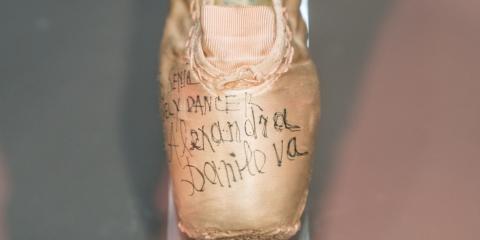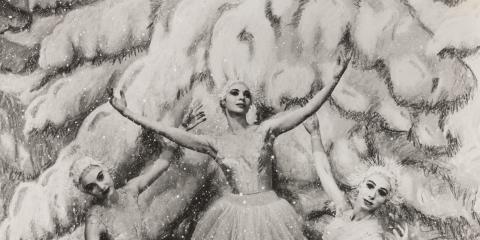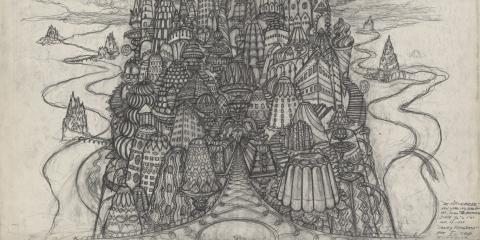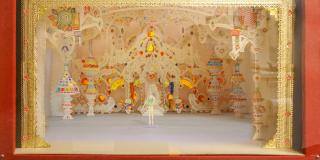It is so much a part of the holidays in New York that it is now hard to imagine a time when George Balanchine’s The Nutcracker® did not call for an annual pilgrimage to the ballet. When the ballet debuted in 1954, however, it was not an immediate success. But when a televised and narrated version brought this magical world into people’s homes all across America in 1958, a classic was born. In 1964, the ballet saw some choreographic changes, and brand new costumes and sets were commissioned from the artists Barbara Karinska and Rouben Ter-Arutunian. The modifications brought iced perfection to an already sweet work, and George Balanchine’s The Nutcracker® has remained untouched since this time, allowing multiple generations to bond over a shared experience year after year with the New York City Ballet.
The exhibition Winter Wonderland: George Balanchine’s The Nutcracker® charts the early years of the ballet’s life, from its premiere in February 1954 to the success of the remounted production in 1964. Through treasures from the archives of the Jerome Robbins Dance Division, including photographs, set models, and costume designs, the story of the work emerges, as do the thematic qualities that make Balanchine’s version of the ballet unique and so enduring: namely nostalgia, faith, love, and childhood innocence and wonder.














